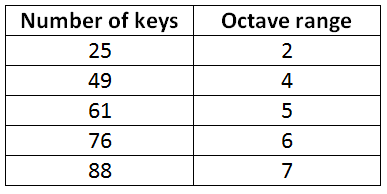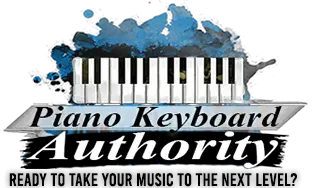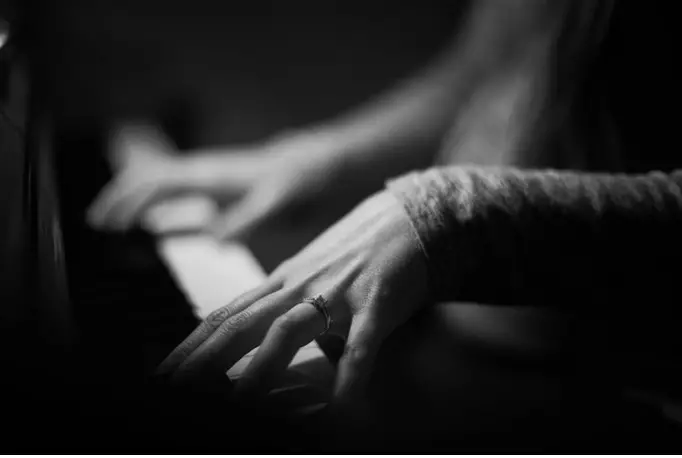Table of Contents
Introduction
You might ask yourself sometimes, “is playing the keyboard the same as playing the piano?”. The term “keyboard” and the word “piano” can be usually interchanged with each other due to their similarity. But get this – they can actually be two different things:
The Piano
A piano is usually a large musical instrument and is only commonly found in larger homes that can accommodate them. The most common form of a piano is the grand piano, which uses strings as a mechanism for making a sound.
When a key is pressed on a piano, the hammer action “hammers” the strings that are laid flat inside the piano itself, making the sound. They are also called “mechanical pianos” to differentiate them from digital ones. Mechanical pianos are usually harder to play for beginners.
There are different types of pianos:
- A concert or grand piano (the large one)
- An upright piano (the slightly smaller one but still uses strings and saves space)
- A digital piano (which can also be called a keyboard, discussed below)
The Keyboard
A keyboard is usually a portable version of a piano. Keyboards are digital in nature and rely on electronics, chips, circuit boards, and sampling to recreate the sounds of a real piano, as well as other effects such as synthesizer sounds, strings, guitars, drums and many other instruments.
They can either run on AC power or battery power and can be cheaper in price as compared to a grand or upright piano. Digital keyboards are usually much easier to press than mechanical pianos, making them more beginner-friendly in general.
How many keys are there on a piano keyboard?
The most standard number of keys on a piano keyboard would be 88 keys, which include:
- 52 white keys
- 36 black keys (the sharps and flats)
Originally, there were only 60, but as modernization was made by artists and musicians, they eventually came up with a total of 88 keys for a higher octave or range of notes.
On the side note, a grand piano or a mechanical piano uses about 220 strings for the totality of 88 keys in order to make harmony when you play it. This is further divided into string sections depending on how low the notes are or how high up they are on the scale.
Alongside that, there are also other common sizes of piano keyboards, such as:
- 25 keys – these are mostly for synthesizers, MIDI controllers and for portability.
- 49 keys – they can be great for kids and first-time players due to their size.
- 61 keys – these are close to the standard size and are great for beginners.
- 76 keys – these ones are also very close to the 88-key ones and are beginner-friendly.
Which keys are which on a piano?
To help you get oriented with the basic keys on a piano, here’s a helpful chart:

This is a single octave, in which larger keyboards with more keys may have more octaves. An octave is a collection of these basic notes, and it’s important to know them on the piano keyboard. The white keys are called the naturals and usually make up the easiest chords. The black keys make up the flats or sharps – keys that add more drama and suspense to the basic natural keys.
Getting to know the layout of the piano keyboard is important first before you find out the basic chords. In order to hit the chords, you must know the position of the key of C in the piano keyboard that you have. If you are a beginner, you can put stickers on them so that you’ll memorize them easily. Think of it as using training wheels on a bike.
What are the keys on a 61 key keyboard?
There are a total of 5 octaves on the 61-key keyboard. Each of these octaves has a layout the same as the chart that we’ve shown you above. This entire octave is repeated throughout the keyboard 5 times. Different sized keyboards have different octave ranges. Here are some of them:

Is a 61-key keyboard enough?
It really depends on different factors for you as a piano or keyboard player, which can be one of the following:
1. Who will play the keyboard?
Most beginners won’t really need all the extra octaves because the song pieces that they are going to be learning at first will be very easy and will revolve only around 2 to 3 octaves at most. However, it may be necessary to invest in higher octave keyboards if you want to save on a budget and continue to improve your skills later on.
2. What are some of your usual pieces to play?
If your piece is filled with sonatas that use more than 5 octaves then you should definitely have a bigger keyboard. Take note of the octave range chart we posted above and see which one is the best for you and the kind of music that you usually play.
3. Will you take the keyboard anywhere?
Portability is important and it can sometimes sacrifice the number of keys on your keyboard. If you just want a good keyboard to take elsewhere without having too many octaves then you can be okay with a 61-key at the very least.
4. What is your budget?
Most 61-key keyboards are usually priced cheaper because they have fewer keys to deal with. On the other hand, 88-key ones will usually be much more expensive.
In Conclusion
Playing the keyboard can be the same as playing the piano due to their similarity of note layouts. However, do take note that playing a mechanical piano can be harder due to its strings, whereas digital keyboards are more beginner-friendly. Which do you prefer: a mechanical piano or a digital keyboard?

